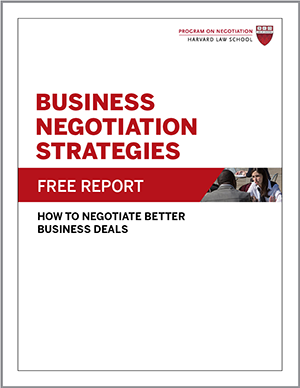
Back in 2013, a three-year negotiation and dispute between Starbucks and Kraft Foods over distribution of Starbucks packaged coffee in grocery stores was finally resolved. On November 12, 2013, an arbitrator determined that Starbucks had breached its agreement with Kraft and ordered the coffeemaker to pay the food giant $2.75 billion.
After negotiating an agreement in 1998, Kraft began selling Starbucks packaged coffee through grocery stores. In 2010, with sales of its packaged coffee reaching about $500 million annually, Starbucks offered to buy Kraft out of the contract for $750 million. Starbucks wanted greater flexibility to sell the single-serve coffee pods that were hot at the time. The company’s agreement with Kraft limited Starbucks to selling pods that worked only in Kraft’s Tassimo machines.
Kraft objected to the deal termination, but Starbucks broke off the business relationship nonetheless. Since then, Starbucks’ share of the single-serving pod market and grocery-store products has grown significantly. The parties’ dispute over Starbucks’ termination of their partnership moved to arbitration when the two sides were unable to settle it on their own.
The business dispute illustrates how the fluid nature of marketplace trends can cause negotiated business agreements to become undesirable over time. In their original agreement, Kraft and Starbucks would have been wise to agree upon set times for renegotiation, during which they would have had leeway to revisit existing deal terms in the face of changed economic and industry conditions. They could also have negotiated conditions for ending the agreement early, such as cancellation penalties and other forms of compensation.
Business Negotiation: Writing a Negotiated Agreement
Some negotiations end with a negotiated agreement that is a plan of action rather than a signed contract – for example, a plumber agrees to fix the tile damage caused by his work. Other negotiations wouldn’t be appropriate to commemorate in writing, such as how you and your spouse decide to discipline your young child. But in virtually all significant business negotiations, parties should put pen to paper after negotiating the terms of their deal. In fact, contract law requires certain types of deals to be in writing for them to be enforceable.
Sometimes you and your counterpart can draft the agreement on your own. In larger deals and dispute settlement, however, lawyers or other third-party professionals draft the terms for you. Unfortunately, the handoff from deal makers to deal drafters is error prone – and these errors can have real business consequences.
We’d love to hear your stories! Share your business negotiation stories in the comments.
Related Articles: Dealmaking: Three Deal-Drafting Pitfalls – Learn about three dealmaking problems that business negotiators commonly encounter in the course of their negotiations.
In Business Negotiations, Talks With Competitors Carry Risks – Know the risks inherent in business negotiations with competitors and how to best deal with them in this business negotiation skills tips article.
Status Anxiety in Business Negotiations – Concerns about status and reputation affect many different types of negotiations. In this article, learn about how status anxiety can impact business negotiations and learn valuable negotiation skills to grapple with the issue.
How to Negotiate When You’re Literally Far Apart – Negotiations conducted at a distance present unique challenges and opportunities for business negotiators. Find out the business negotiation skills the skilled negotiator needs to employ when dealing with a counterpart who is not physically at the bargaining table.
The Deal Is Done – Now What? – Even though the deal is completed, there are still some areas that negotiators need to pay attention to in order to insure success at the bargaining table. This article discusses the strategies business negotiators can employ after the negotiation is over to guarantee their agreement’s success.
Negotiation Skills – Three Sources of Power at the Bargaining Table – What sources of power does a negotiator have at her disposal while in negotiations at the bargaining table? Read this negotiation skills tips article to learn more about the three sources of power a negotiator has at her disposal during a negotiating session.
Dealmaking – The New Strategy of Negotiauctions – Bringing together auction theory and negotiation theory in a practical and accessible way, Negotiauctions is an authoritative guide to negotiating deals. Today’s increasingly competitive marketplace is filled with business transactions that include elements of both negotiations and auctions, yet the received wisdom on deal-making treats these two mechanisms separately. Leading dealmaking scholar Guhan Subramanian explores the ubiquitous situation in which negotiators are “fighting on two fronts”—across the table, of course, but also on the same side of the table with known, unknown, or possible competitors.
Originally published in 2013.





It would’ve been great, if you added this statement made by Starbucks (taken from NY Times, so it’s highly accurate): “We believe Kraft did not deliver on the responsibilities to our brand under the agreement, the performance of the business suffered as a result and that we had a right to terminate the agreement without payment to Kraft”.
After that, Starbucks added that taking back its packaged coffee business from Kraft was the “right” decision. In fiscal 2013, its channel development division, which includes business to stores other than Starbucks, reached $1.4 billion in revenue.
Sincerely,
Your loyal reader Samantha Sharf